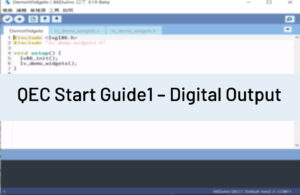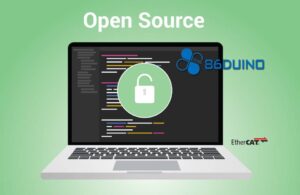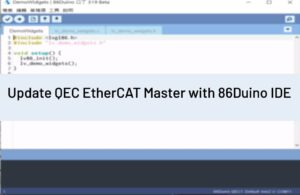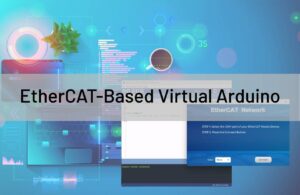ICOP’s QEC (Quicker, Easier Control with EtherCAT) is an Industrial-Arduino-based EtherCAT solution with a dual-core VortexEX2 processor developed by DMP Electronic to achieve hardware and software Real-time requirements.
Read more: The Benefits of Using the EtherCAT Transmission Standard.
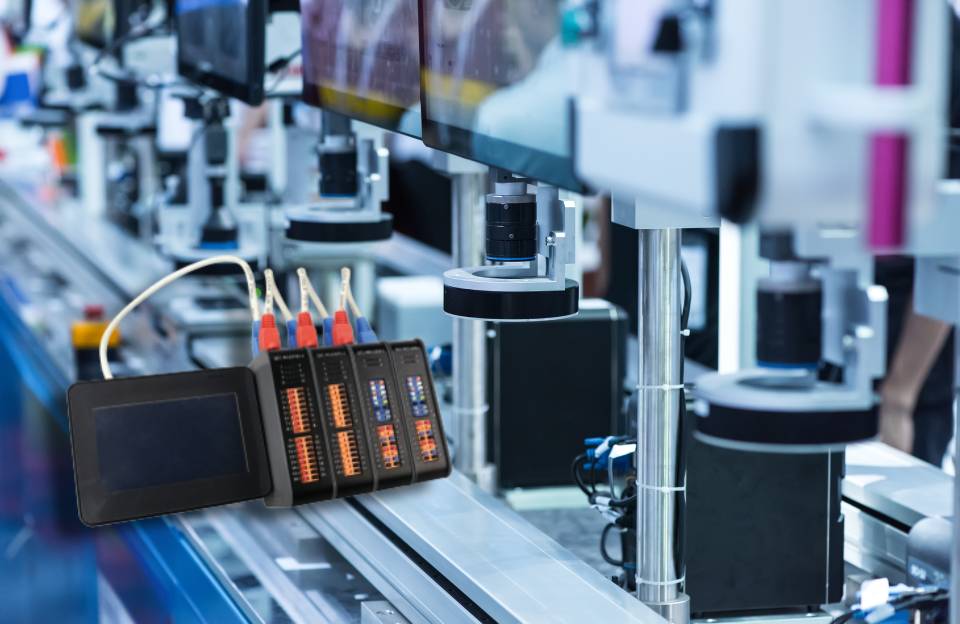
QEC family is friendly hardware and software EtherCAT device to satisfy all kinds of users who expect to use EtherCAT.
QEC Framework
The QEC-M series is an EtherCAT master that uses a dual-core, independently operating DM&P Vortex86EX2 processor for real-time, reliable synchronous EtherCAT control. The master core of the processor serves as the Arduino development environment; the slave core of the processor serves as the Real-time EtherCAT master. The two cores exchange data via Inter-Processors Communications (IPC).
* The architecture of the QEC system is configured with Redundancy.
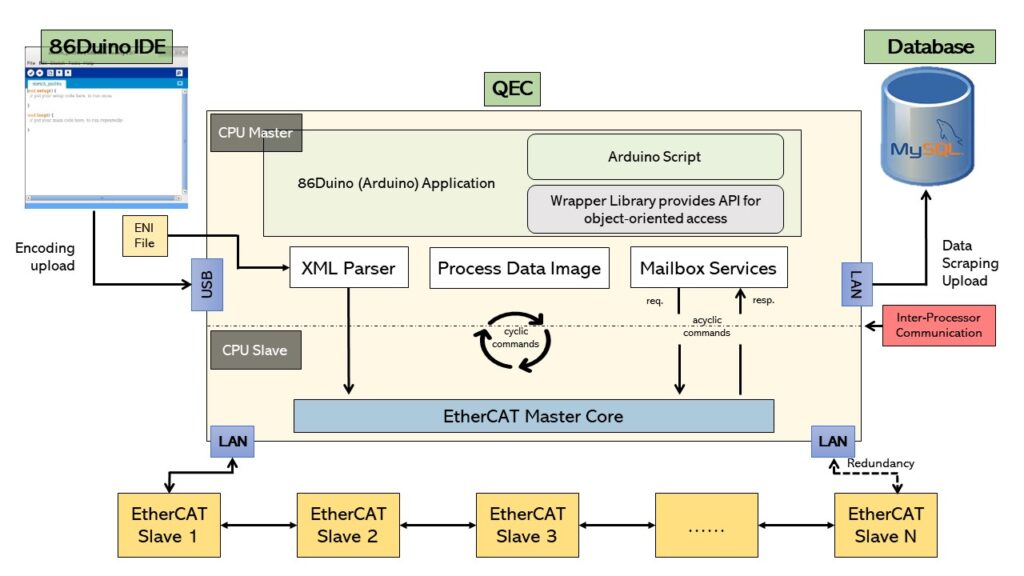
CPU Master:
The master core serves as the development environment for 86Duino (Arduino) applications; all development programs in the IDE will be processed in the master core. The master core will collect/exchange data of the slave core, like connecting to an external network via Ethernet and uploading the data collected by the slaves to a remote server or database (e.g., Apache, MySQL, MariaDB).
CPU Slave:
The slave core is the EtherCAT Master driver core of the QEC-M, with real-time and precise synchronization features; it can collect/exchange real-time data from EtherCAT Slaves, and the data will be exchanged with the master core of the processor via IPC.
Software Support
A. Arduino Programming Environment:
Arduino has open-source code and countless examples of applications on the market, coupled with the fact that Arduino is part of the primary education curriculum in many countries, make QECs low barrier to use, allowing even non-electronic and software professionals to automate production processes with QECs on the Arduino platform while saving companies considerable labor costs and time.
B. Arduino Coding Interface: ArduBlock
ArduBlock (drag-and-drop building block programming software) has simplified the way of writing programs. It is foreseeable that in the future, the way to write control programs is to use Scratch to pull the building blocks or write the code directly with the Arduino API so that the Real-Time EtherCAT automation can be done without the need to understand the underlying implementation.
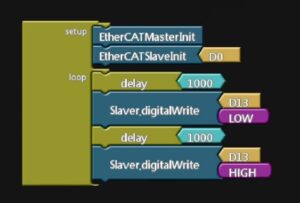
Figure: ArduBlock in EtherCAT Library
Hardware Setup
A. Power Redundancy on two sets of isolated power inputs
Two mutually isolated power inputs (5V-56Vdc), V-system (Vs), and V-peripheral (Vp) are supported as redundant DC power supplies.
B. QEC Internal Working Status Monitoring
The QEC Slave device is easy to use with its deficient power Sensor IC technology. It is capable of monitoring Vs & Vp voltages and currents, as well as internal operating temperatures, and provides information for data analysis to check whether power consumption is reasonable.
C. RJ45 Cable Power Supply
A single network cable can simultaneously input Vs and Vp power supplies as a mutual DC power supply (Redundancy).
The maximum input is 3 Amp and includes hardware protection circuits such as reverse polarity and overvoltage. For a 100MB network cable, only four lines are needed for the signal, and the other four lines in the network cable are used as Vs+/Vs-/Vp+/Vp-.
D. Cable Redundancy EtherCAT Slave Architecture
Support for Cable Redundancy Dual Network Routing Interaction Redundancy EtherCAT Slave architecture, one of the cables will not be shut down even if it fails.
E. Auto-Switch OR-ing Power Supply System
OR-ing is a multi-terminal power input that automatically switches to provide power input.
If the QEC Slave device with OR-ing is not used as a redundant DC power supply, it can be used as a power output to supply power to the QEC Slave device with a maximum current of 200 mA. e.g., if it is challenging to provide QEC power on-site, it is possible to supply power to other QEC devices using the network cable without inputting Vs and Vp power.
F. Various Digital I/O configurations
QEC solutions provide customers with flexible hardware configurations for EtherCAT slave modules. With various DIQ configurations on a single EtherCAT slave module, customers can choose the suitable model according to the application’s number of digital inputs and digital outputs and save costs.
G. Hardware Disconnection or Error Alarm
When the QEC Slave device network is disconnected or an error occurs, the hardware LED will blink or stay on, and the error code will be displayed.
H. Multi-Color Terminal Blocks for Easy Function Separation
QEC’s multi-color terminal blocks are color-coded to differentiate functions, making them easy to identify, saving the installer time and dramatically reducing the chance of human error, saving enterprises the labor and time costs of deploying EtherCAT devices.
